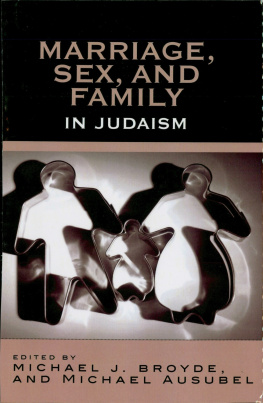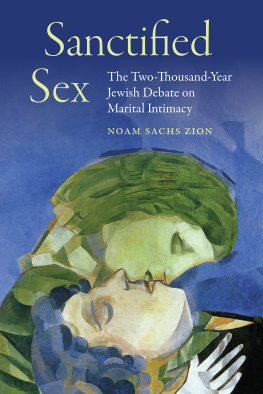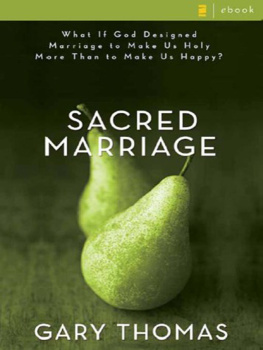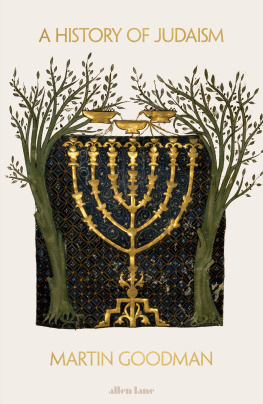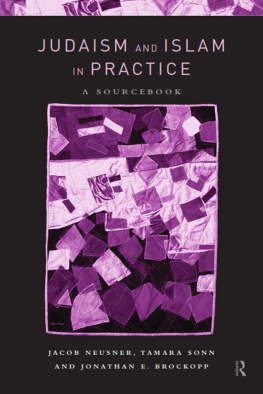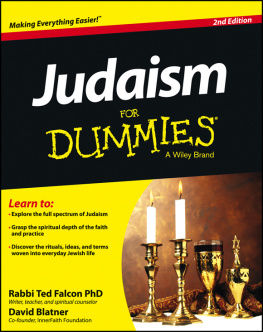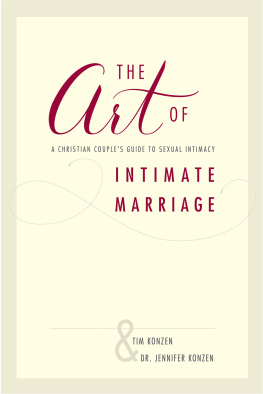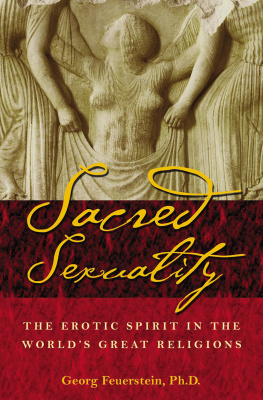SEXUALITY AND JEWISH LAW
IN SEARCH OF A BALANCED APPROACH IN TORAH
VOLUME ONE
HALACHIC POSITIONS
WHAT JUDAISM REALLY SAYS
ABOUT PASSION IN THE MARITAL BED
AN OUTLINE, ANALYSIS AND CANDID DISCUSSION
YAAKOV SHAPIRO
EXPANDED EDITION
Copyright 2015, 2016, 2017 by Jonathan Shapiro
All rights reserved
ISBN-13:
978-0692563236
ISBN-10:
0692563237
First Edition November 24, 2015
Second Edition January 7, 2016
Third Edition January 22, 2017
SexualityandJewishLaw.com
Dedicated to our Creator,
Who fashioned husband and wife from the dust,
breathed into them of His own spirit,
and then commanded them to become one flesh
through the pleasure of sex
Genesis 2:24; Sanhedrin 58b, Rashi: Shelo Cedarcah
My Deepest Gratitude Goes To:
The Creator, for being my strength and the might of my hand
You know the intentions of my heart, and I ask Your
forgiveness for any inadvertent misrepresentations of Your will;
My wife, for her abundant patience
and unabashed support;
My children, who know not yet for what they have sacrificed
youll understand, and thank me, when youre older;
The rabbis who engaged me in serious discussion
and offered sage counsel;
My cover photographer, Meir Pliskin,
and cover designer, Sruli Leider,
for bringing the vision to life;
And all those who encouraged, and demanded,
the publication of this work.
The Talmudic sage, Rav Cahana, once hid under the bed of his master, Rav, and listened as he talked and laughed with his wife and performed his sexual needs.
Rav Cahana exclaimed: Such talk? It sounds as if the master has never tasted sex in his life!
Rav responded: Cahana, get out of here! This is uncivilized!
Rav Cahana answered back: This, too, is part of Torah, and I need to learn it.
Talmud, Tractates Brachos 62a, Hagigah 5b
In all these matters [variety in sexual positions] it all follows the personal tastes of husband and wife.
And if a man has found a good wife who is of same mind with him in these matters, to him applies the verse in Proverbs (18:22): He who has found a wife has found goodness, and has elicited favor from the Lord, and the verse in Ecclesiastes (9:7): Go, eat your bread with joy and drink your wine with a merry heart, for G-d has already approved your deeds.
Rabbi Yehudah the Pious, Sefer Chasidim 509
Preface to the Third Edition
The first edition of this book was released in November 2015, after eleven long years of research and writing. This third edition incorporates one additional year of study and discussion, before focus shall be turned to other important projects that beckon, including volume two of the Sexuality and Jewish Law series.
As noted in the original introduction, it was always in the plan to continue to refine and expand this work. Immediately after publishing the first edition, two revised editions were updated and made available in December 2015, followed by an official second edition in January 2016. All major revisions up to and including those in the second edition were made available to the public at SexualityandJewishLaw.com. This expanded, third edition includes additional elucidation and an index, both of which shall be made available for public reference at the said website as well. The original pagination has been maintained throughout all editions, so that the index is consistent with them all.
I would like to take this opportunity to recommend to readers two additional important Hebrew works that came to my attention over the past year, both by Orthodox rabbinic writers and both addressing the subject of marital harmony and sexual intimacy. They are Es Lifrosh vEs Leehov by Rabbi Simcha Feuerman (Hadaf, 2016), and Ladaat Leehov by Rabbi Avraham Shmuel (second edition, 2015).
Most importantly, this past September the author of Ladaat Leehov brought to my attention two remarkable Hebrew halachic works about the laws of marital sexual intimacy, namely, Simchat Habayit vBirchato by Rabbi Eliezer Melamed of Yeshivat Har Brachah in Israel (second edition, 2015), and Harchavot lSimchat Habayit vBirchato, written under Rabbi Melameds guidance by a student of his, Rabbi Maor Kayam (2015). I believe these are quite literally the best practical halachic works out there on the subject that I am aware of to date, and it is my hope that they will soon be translated into English. Throughout this third edition, Ive added references to corresponding discussions by Rabbi Melamed and Rabbi Kayam in these two works.
It remains my sincere hope that this study will continue to contribute to a healthy reexploration of Torah sources, and to a positive and immediate reexamination of cultural norms, so that halachic individuals and couples may be granted new eyes to see and new ears to hear the realistic down-to-earth wisdom hidden between the lines of ancient sacred text, resulting in deeper understanding and acceptance of themselves, deeper vulnerability and bonding between spouses, and deeper appreciation of, and identification with, the Creator.
January 22, 2017
24 Tevet, 5777
One important correction brought to my attention by these two works relates to the identity of the medieval rabbinic authority referred to in Shitah Mekubetzes, Nedarim 20b, by the acronym, Reem. In previous editions, I mistakenly wrote that this referred to Rabbi Eliyahu Mizrachi (c.1455-c.1525). In the course of studying these two works, I was made aware that it refers to Rabbi Eliezer of Metz (12th century author of Sefer Yeraim).
.
TABLE OF CONTENTS
)
The Safed School of Kabbalists
A Critical Look at Rabbi Caros Source in Shulchan Aruch:
Raavad IIIs Baalei HaNefesh, Shaar Hakedushah
Gazing at the Female Genitals and Shamefacedness, Part One:
Equating Rabbi Shimon ben Lakish and Rabbi Yochanan ben Dahavai
Gazing at the Female Genitals and Shamefacedness, Part Two:
Tractate Derech Eretz, Vayikra Rabah
Gazing at the Female Genitals and Shamefacedness, Part Three:
The Definition of Shame
Introduction
Jews and sex can appear to have a love-hate relationship.
Judaism generally gets better reviews than some other religions when it comes to sex, by virtue of the fact that it ascribes holiness to the act when performed lovingly between husband and wife, and because it obligates, rather than prohibits, its clergy to marry. This positive attitude is an extension of Judaisms overall view that this world and its pleasures are not intrinsically evil, but rather the physical is a neutral gift from G-d that can be used by man for curse or for blessing. That being said, delving into the actual rabbinic sources on the matter of Jewish marital intimacy, this seemingly positive approach can get obscure rather quickly.
On the one hand, there are authoritative sources that look approvingly upon sex as the opportunity for husband and wife to share complete vulnerability, to bare their whole selves to one another psychologically, emotionally, spiritually, physically, erotically.
Such paradox is especially evident in rabbinic teaching in the area of sexual technique and positions within marriage, the main focus of this book. There are sources that can be understood to permit any sexual technique or position a couple might find curious or enjoyable, while other sources collectively predict physical or spiritual harm upon them, or their offspring, for anything more adventurous than missionary style.
Since ancient times, then, Judaism has offered a wide range of approaches on the matter of sexual expression within marriage, reflecting a wide-range of interpretation and sensibility, and theoretically enabling each and every couple to tailor the law of this most intimate, private part of life to the unique physical and spiritual dimensions of their relationship.
Next page



